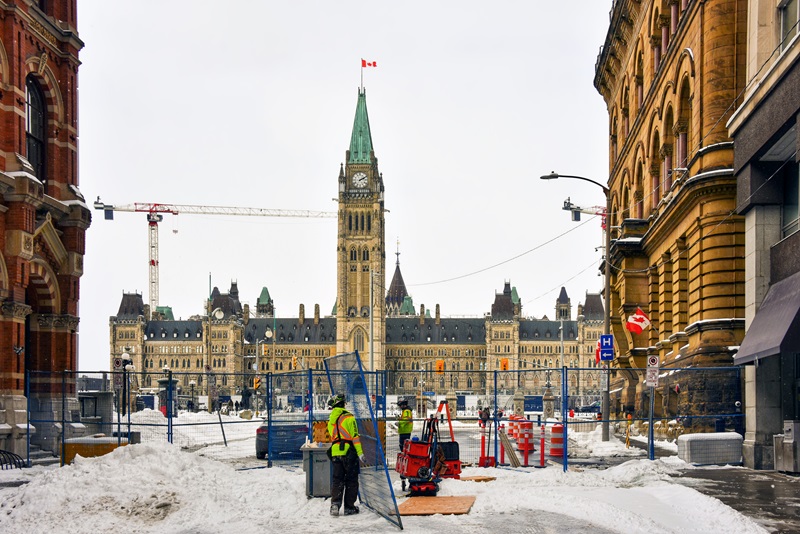3 ways Canadian insurers can prepare for political risk

Canada is not immune to social divisions resulting in damage caused by political protests, and insurance companies can do three things to prepare for political risk, says a new report published by the Insurance Institute of Canada.
First, insurance companies should clarify their policy wordings — such as the meaning of the word ‘occurrence’ to describe an ongoing protest — so that it is clear which political risks are covered and which are not.
“Canada and many other countries are becoming increasingly divided societies,” says the Institute report, Political Risk: Implication for the Insurance Industry in Canada, authored by Paul Kovacs, the founder and executive director at Institute for Catastrophic Loss Reduction.
“Division increases the risk that disadvantaged groups organize demonstrations and protests seeking to disrupt the status quo.”
The Institute’s report observes many instances of social inequality — such as ongoing economic disparity and a lack of diversity, equity and inclusion — are present in Canada and could give rise to future political protests.
For example, Canadians are now confronted by higher costs for food, housing, and energy due in part to the Russian invasion of Ukraine, Middle East conflict, an escalating climate crisis, and the long-term impact of COVID-19.
The report shows how insurers could have been impacted by political upheaval emerging from how governments handled the COVID-19 global pandemic. Namely, in Canada, those opposed to government-imposed public health measures organized a ‘Freedom Convoy’ of protestors who demonstrated in front of the Parliament building in Ottawa in early 2022.
The protest rally started Jan. 29, 2022, and resulted in blockades restricting trade across U.S. and Canadian border points. Ontario declared a state of emergency on Feb. 11, and the federal government invoked the Emergencies Act three days later. By the end of February, most protestors had been cleared from the protest site in Ottawa.
Although the Freedom Convoy did not result in a catastrophic number of property damage claims, the paper says the event points to a need for insurers to check their policy wordings to clarify what kind of damage is covered by these types of political events and what is not.
In particular, how would policy deductibles apply to damage caused by widespread, ongoing political protests?
“Insurance coverage issues emerged in recent years that can be clarified in policy wordings,” the report states. “For example, the death of George Floyd triggered protests in 140 cities across the United States.
“Some companies, like Nordstrom, argue this was a single occurrence resulting in one claim for losses experienced at stores at many locations. The company argued that the deductible agreed to in their insurance coverage should be applied once across losses experienced at multiple locations.
“However, some insurers view the looting at different locations as multiple independent events that are each subject to established deductibles. This significantly reduced the payment offered.”
Insurers should clarify the intent of coverage through revised contract wording, the report recommends. “For example, would the Freedom Convoy in Canada have been covered as a single event with disruptions in many locations, or as many events?”
Related: Is political risk the next NatCat?
In addition, the report says, Canada’s P&C industry should build its capacity for losses due to political risk, based on an analysis of political risks around the world.
“The timely sharing of information available to insurance companies may be used to reduce the risk of loss for policyholders,” Kovacs writes. “This may include knowledge about the nature of losses experienced, sharing of lessons learned from previous events, and proven actions to reduce the risk of loss.”
Finally, the industry “should work to identify loss prevention best practices,” the report states. These loss prevention measures should be shared with police and policyholders so that they may be able to prevent or mitigate losses when managing the risk of violent political demonstrations.
“History demonstrates that the shared sense of national unity evident in the 1967 celebration of Canada’s first 100 years quickly deteriorated, as experienced with the 1970 October Crisis and Western alienation that followed the federal government’s response to the 1973 oil crisis,” the report states. “International evidence warns that driving factors found in Canada have resulted in an erosion in social cohesion in many other countries.
“The risk of violent actions is low but expected to increase in Canada over the next 10 years.”
The report features five case studies of political protests resulting in major property damage — including the 1992 Los Angeles race riots, the death of George Floyd in 2020 while in police custody, and four countries experiencing protests for various reasons that caused insurance payouts of more than $1 billion.
Feature image courtesy of iStock.com/PaulMcKinnon







